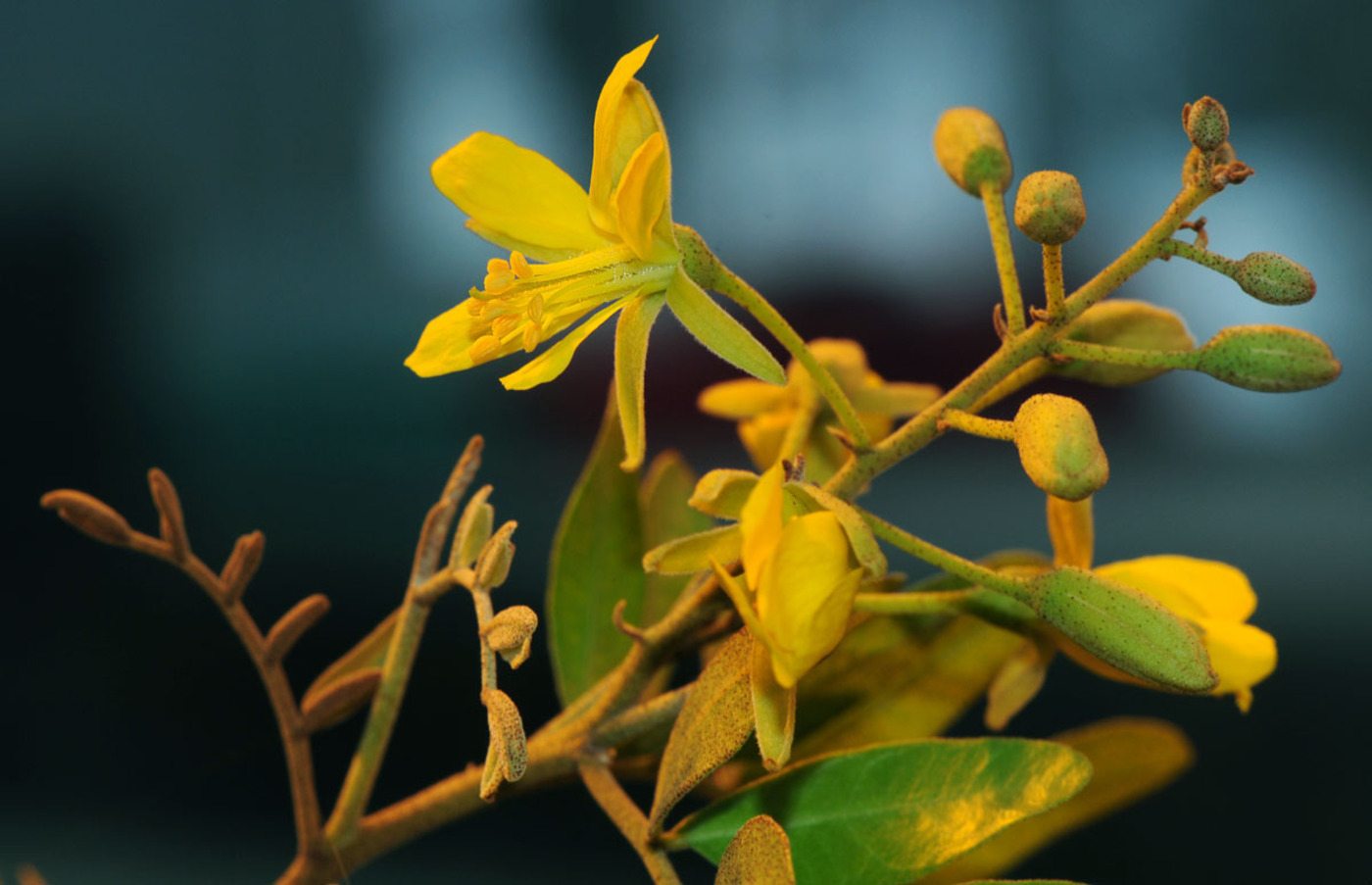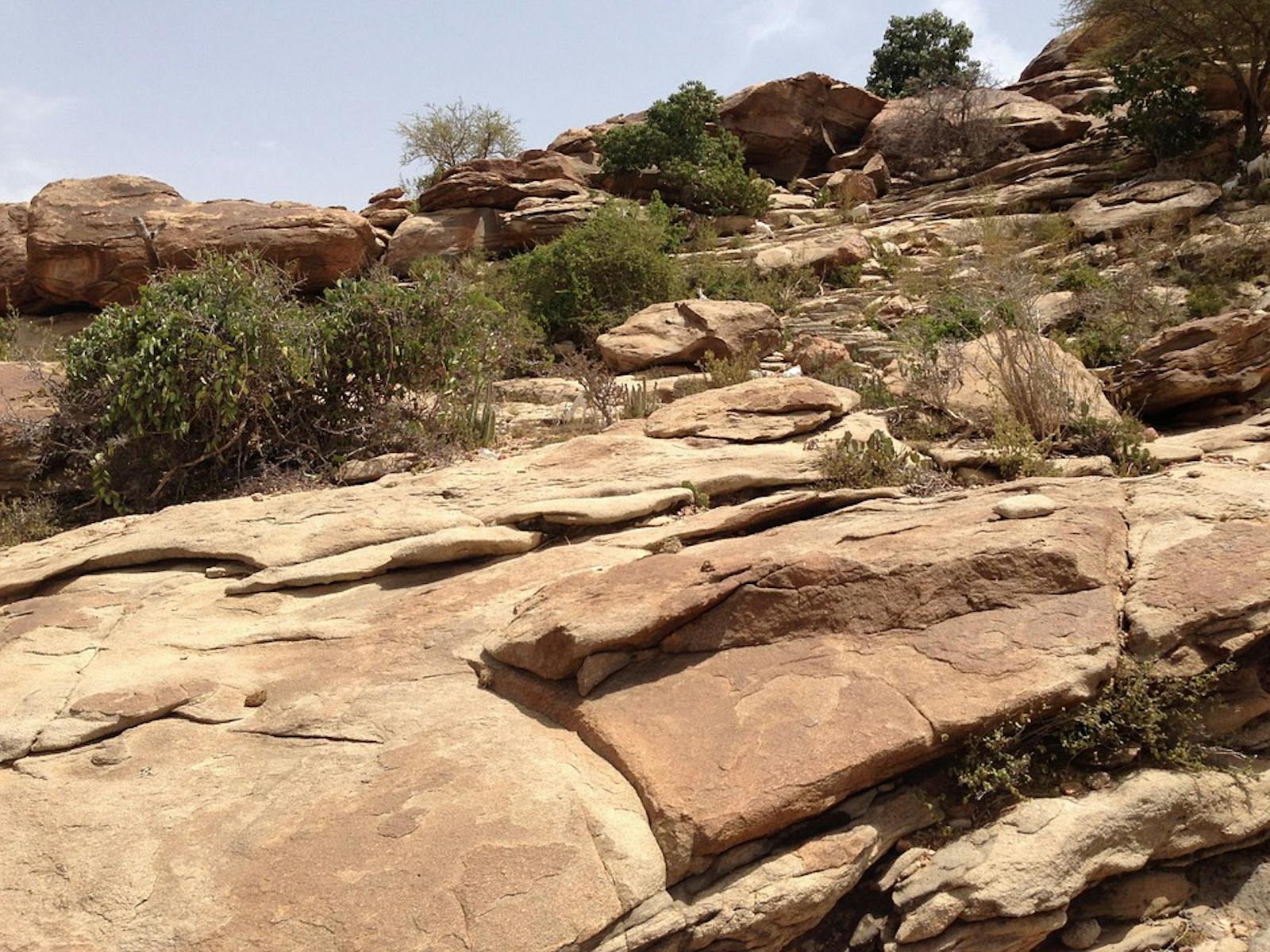Horn of Africa Xeric Bushlands
The ecoregion’s land area is provided in units of 1,000 hectares. The protection goal is the Global Safety Net (GSN1) area for the given ecoregion. The protection level indicates the percentage of the GSN goal that is currently protected on a scale of 0-10. N/A means data is not available at this time.
Bioregion: South Red Sea & Gulf of Aden Coastal Drylands (AT22)
Realm: Afrotropics
Ecoregion Size (1000 ha):
23,199
Ecoregion ID:
45
Protection Goal:
15%
Protection Level:
0
States: Somalia, Ethiopia
Somalia is home to the Yeheb nut, an evergreen shrub or small tree with yellow flowers and edible, highly nourishing seeds for both humans and animals. It is also very drought hardy and termite resistant, which makes it a useful source of construction wood. Endemic to Ethiopia and Somalia, the nuts are consumed as a staple food by pastoralists and sold in local markets. However, the Yeheb nut population is declining and natural regeneration is prevented as it is threatened by drought, overgrazing, over-harvesting of nuts, excessive cutting for fuelwood, and wood for construction.
The ecoregion occupies the majority of the Horn of Africa, including the top right hand corner of the Ogaden Desert in Ethiopia and the inland region of the horn of Africa in Somalia, separated from the coast by Somali montane xeric woodlands. The mean maximum temperatures are around 30°C, and the mean minimum temperatures are 15° to 18°C.

The flagship species of the Horn of Africa Xeric Bushlands ecoregion is the Yeheb nut. Image credit: Courtesy of Initiatives of Change 2016
Annual rainfall varies from below 100 mm in the Ogaden Desert. Most of the area is underlain by post-Cretaceous rocks that are mainly marine in origin, over which soils indicative of high aridity - xerosols and yermosols - have developed. Phytogeographically, the ecoregion lies within Somali-Masai regional centre of endemism, dominated by deciduous bushland and thicket.
The most common tree species are deciduous and belong to the genera Acacia and Commiphora. At lower elevations where rainfall is less consistent, vegetation becomes semi-desert scrubland. Here Acacia and Commiphora are joined by Euphorbia and Aloe, as well as grass species such as Dactyloctenium aegyptium and Panicum turgidum.
The Horn of Africa is a well-recognized center of endemism and biodiversity hotspot. Several sub-centers of plant endemism are found in northeastern Somalia and in the Ogaden Desert. Examples of endemic trees are Boswellia rivae (a frankincense tree), Commiphora guidottii (the source of scented myrrh), Steganotaenia commiphoroides (a member of the largely herbaceous family Apiaceae that grows to a 10 m tall tree), and Hildegardia gillettii (with a flask-shaped trunk).
The Horn of Africa is also a notable centre of endemism for mammals, particularly for arid-adapted antelopes such as the dibatag, beira, hirola, and Speke's gazelle. The Somali warthog is also near-endemic to this ecoregion. The widely distributed but threatened ungulate species dorcas gazelle and Sömmerring's gazelle are also found here. Lion, leopard, cheetah, and striped and spotted hyenas are the main large carnivores.
The habitats of the ecoregion are mainly dry woodlands and scrub, with a gradation to grasslands and deserts in the driest places. Most of these areas remain unfragmented and intact, as the human population is low and agriculture is concentrated along watercourses. However, the ecoregion has been severely affected by political instability and war over the past few decades. There are very few protected areas in this ecoregion, most notably Taleh-El Chebet National Park and las’anod National Park.
Habitats are partially degraded through grazing by livestock and fuelwood collection, particularly close to villages and towns. Land overuse is more intense in areas where large-scale farming and irrigation schemes have been launched. A severe problem is the uncontrolled exploitation of the Acacia woodlands (particularly A. bussei) for the production of charcoal which is impacting the composition of ecosystems. Riverine vegetation is often extremely degraded, mostly due to the cutting of fuelwood and poles.
Some economically important species, such as the yeheb nut may be declining due to overgrazing. Over the past few decades, aridity and drought recurrence have been increasing significantly and will continue to increase due to climate change. Both Ethiopia and Somalia suffer from political strife which diverts attention away from biodiversity concerns.
The priority conservation actions for the next decade will be to: 1) provide training on sustainable, drought resistant agriculture techniques, for example, water harvesting and soil and water conservation; 2) establish protected areas and improve their management; and 3) promote alternative, renewable fuel sources to charcoal.
Citations
1. Burgess, N., Hales, J.A., Underwood, E., Dinerstein, E., Olson, D., Itoua, I., Schipper, J., Ricketts, T. and Newman, K. 2004. Terrestrial ecoregions of Africa and Madagascar: a conservation assessment. Island Press.
2. Ullah, S. and Gadain, H. 2016. National Biodiversity Strategy and Action Plan (NBSAP) of Somalia. Somalia: FAO.
3. Yusuf, M., Teklehaimanot, Z. and Gurmu, D. 2013. The decline of the Vulnerable yeheb Cordeauxia edulis, an economically important dryland shrub of Ethiopia. Oryx. 47(1), pp.54-58.
4. Abdulkadir, G. 2017. Assessment of Drought Recurrence in Somaliland: Causes, Impacts and Mitigations. J Climatol Weather Forecasting. 5(204), p.2.



